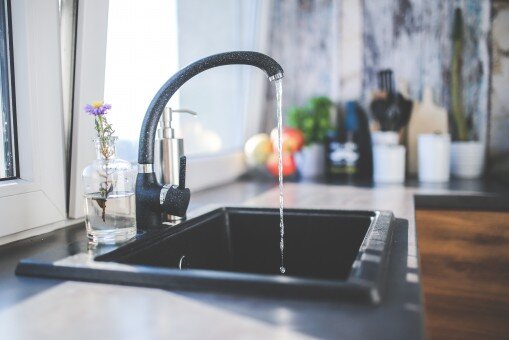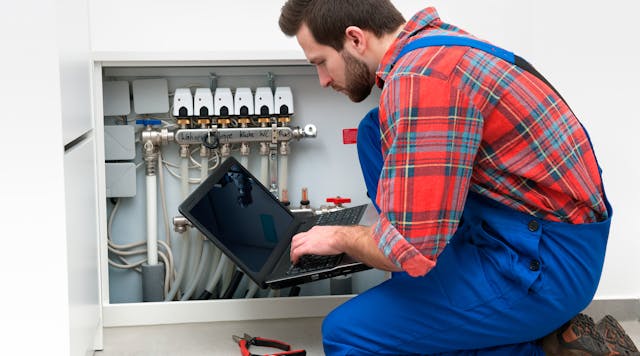What're your ideas with regards to Innovative Plumbing Trends Transforming Construction?

Intro
The plumbing industry is undertaking a transformative stage driven by technological developments and growing problems for sustainability and effectiveness. This write-up discovers arising patterns and technologies shaping the future of plumbing.
Regulatory Landscape
Regulative structures play a vital role in shaping the fostering of pipes innovations, with criteria and codes governing whatever from water performance to product security. As modern technologies remain to develop, regulative bodies have to adjust to make certain consumer protection and environmental stewardship.
Future Outlook
The future of pipes is identified by continued advancement and assimilation with various other fields such as IoT, renewable energy, and building automation. By accepting lasting techniques, leveraging emerging technologies, and focusing on user-centric design, the plumbing market is positioned to address the evolving requirements of society while minimizing its environmental footprint.
Enhanced Truth in Plumbing
Enhanced Fact (AR) modern technology is changing pipes by giving technicians with real-time visual guidance for repairing and repair work jobs. AR-enabled clever glasses or mobile applications overlay digital details onto the physical environment, assisting plumbings visualize pipeline designs, identify surprise leaks, and carry out repair work with accuracy.
Effect of 3D Printing
The introduction of 3D printing has actually presented new opportunities in manufacturing plumbing elements. From custom-made components to intricate pipe installations, 3D printing allows for fast prototyping and on-demand production, decreasing lead times and making it possible for higher modification in pipes layout.
Health and Safety Characteristics
In feedback to heightened issues for health and wellness, pipes fixtures are including attributes such as antimicrobial surface areas, touchless procedure, and self-cleaning devices. These developments not only enhance health yet likewise advertise user comfort and benefit.
Hygiene-focused Fixtures
Touchless taps, self-sanitizing commodes, and antimicrobial surface areas are ending up being increasingly common in property and commercial settings, decreasing the risk of germ transmission and advertising a cleaner, much healthier environment.
Water Quality Monitoring
Improvements in water top quality surveillance technologies allow home owners to check the purity and safety and security of their water in real-time. Smart water high quality sensors can find contaminants, pH degrees, and temperature variations, encouraging customers to take positive actions to make certain water safety and security.
Remote Plumbing Providers
Remote diagnostics and online assistance are transforming the means pipes services are provided. Via video conferencing and remote accessibility technologies, plumbers can fix problems, provide assistance for DIY repair services, and also perform remote evaluations, offering greater accessibility and convenience to house owners.
Difficulties and Opportunities
While plumbing innovations hold enormous promise, they additionally present challenges such as data personal privacy problems, regulatory compliance, and the need for workforce training. Dealing with these obstacles needs collaboration in between market stakeholders and governing bodies to make certain safe and accountable execution of new innovations.
Smart Pipes Equipments
Incorporating smart innovation into pipes systems enables remote tracking, leak discovery, and automated maintenance. Smart sensors and IoT (Net of Points) devices allow homeowners and plumbing professionals to monitor water usage and spot concerns in real-time, leading to more efficient resource management and aggressive maintenance.
Water Performance Solutions
With raising emphasis on water preservation, ingenious solutions are being established to minimize water waste in plumbing systems. High-efficiency components, greywater recycling systems, and clever irrigation controllers are among the innovations aiding customers decrease their water footprint while keeping convenience and convenience.
Sustainable Materials
The shift towards sustainability extends to plumbing products, with an expanding preference for environmentally friendly options. Biodegradable piping products, such as PEX (cross-linked polyethylene) and HDPE (high-density polyethylene), offer toughness and resistance to deterioration without endangering environmental stability.
Anticipating Upkeep
Predictive maintenance methods leverage data analytics and artificial intelligence algorithms to expect and stop pipes concerns prior to they occur. By assessing historic data and efficiency metrics, anticipating upkeep formulas can recognize patterns and abnormalities, allowing proactive treatments to prevent expensive repairs and interruptions.
Verdict
In conclusion, the future of pipes is specified by a convergence of technology, sustainability, and user-centric layout. By accepting wise services, lasting products, and proactive upkeep methods, the plumbing sector can boost effectiveness, advertise security, and add to a much more sustainable future.
Plumbing Industry Trends You Need To Know
Smart technology in plumbing
Homeowners want to be able to manage their homes from their phones. The technology exists to make that happen. From smart toilets to leak detector devices, the whole plumbing system can be managed on an interconnected network made up of sensors, IoT devices, and machine learning algorithms.
This allows for wireless control to turn appliances on and off, automate routines, and access advanced monitoring to track water usage and flag potential issues. Smart technology streamlines water consumption, maintenance and energy usage, creating a more efficient system.
Green plumbing
The data analysis possible with smart technology not only improves convenience and cost-effectiveness but also fulfills a high-priority customer desire – sustainability. Consumers are very aware of their impact on the planet and want plumbing solutions to reduce damage and support sustainability. Eco-friendly plumbing solutions are already starting to emerge.
Customers can opt for low-flow toilets, water-saving faucets, and connections to sustainable energy sources. Beyond monitoring water consumption, customers can conserve water through the installation of greywater systems. This is a system that collects water that has been used but is still clean enough for some household uses such as toilet flushing.
Shorter product pipeline
To keep up with modern plumbing, plumbers need modern tools that enable them to complete jobs more efficiently. One technology making strides in this area is 3D printing. By 3D printing key plumbing fixtures, plumbers can reduce wait times even for specialized fixtures. It minimizes delays often seen in traditional manufacturing that frustrate customers and prevent plumbers from taking on more work.
Off-site repairs
Augmented reality is making a splash in many industries including plumbing. Plumbers can map a building online so they can explore the plumbing system through augmented reality, identifying areas of maintenance and repair completely digitally. This technology can be applied quite widely in plumbers’ work including planning installations and training new recruits. It’s safer, smarter and more efficient.
Low-footprint materials
Another way for plumbing companies to reduce their environmental footprint and meet the customer demand for sustainability is by using recycled materials in their work. The products they source and manufacture such as pipes, fixtures and faucets can be made from recycled materials. This saves the planet while being just as effective.
Onsite water purification
Additionally, plumbing companies can be advocates of water conservation and ease the financial and environmental concerns of customers by offering water purification systems. New water purification technology such as reverse osmosis systems and UV systems make it possible for homeowners and business owners to thoroughly cleanse water, removing contaminants onsite. This means the water can be safely reused in more ways than greywater can be, establishing a water recycling loop.
Tankless water heaters
Another innovation of modern plumbing is tankless water heaters. The idea is that the water is heated on demand as it runs through the system instead of being heated in a water tank. This is more energy efficient and therefore cost-effective and eco-friendly because water isn’t heated needlessly.

I am very occupied with 7 Plumbing Industry Trends You Need To Know and I'm hoping you liked our page. Please set aside a second to promote this entry if you appreciated it. I recognize the value of your readership.
Call